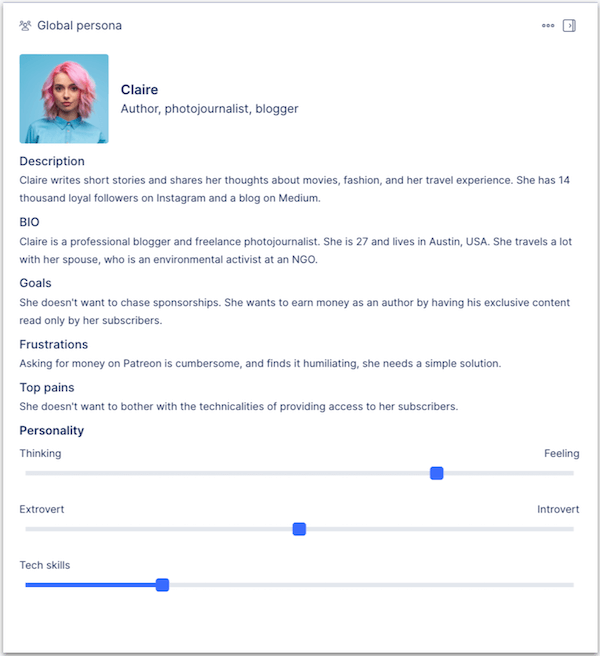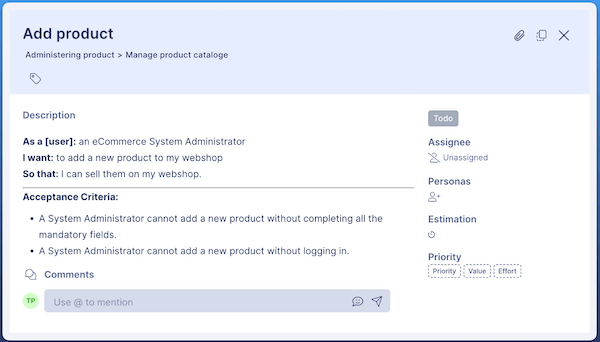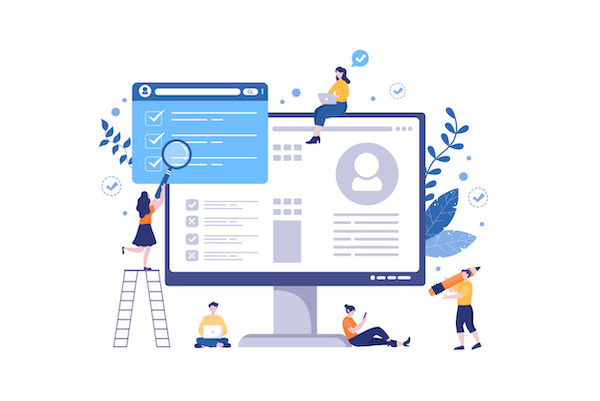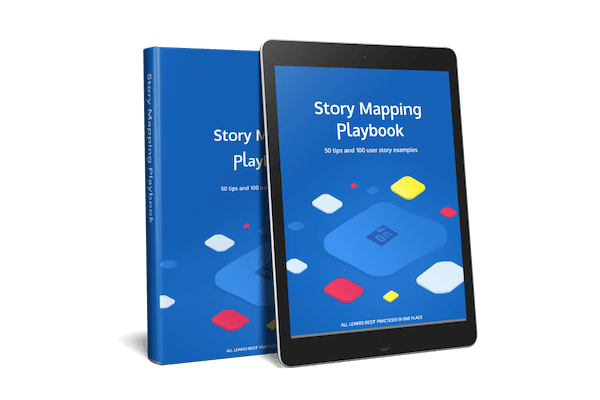To help you create better products, we’ve compiled a list of inspiring user story examples. By learning from these user story examples, you can create products that not only meet your users’ needs but also exceed their expectations. So let’s dive in.
User stories are a powerful tool to help you understand the needs and goals of the potential users you want your product to meet. They provide insights into how the product will be used and what problems it can solve.
However, writing really great user stories can be a challenge. You can try it with AI assistance:
But in this article, we’ll show you examples of user stories so you can learn how to write them effectively.
First, let us clarify some basic concepts and principles.
Contents
What is a user story?
User stories are neither system requirements nor descriptions of product features from a user’s perspective. The Agile approach is about putting the customer’s need at the heart of software development.
By writing user stories, we put the needs and goals of end users at the center of the conversation.
These user stories are not just for the Product Owner or the development team, so we need to write them in simple language that everyone can understand so that all members of a cross-functional product team, stakeholders, and decision-makers have a common understanding of what we are developing and the value they create.
A user story
- Is the smallest unit of work in the Agile framework.
- Is a short, written plain language description of how the software should work from the perspective of the end-user: what are its benefits, and what they expect from the product.
- Does not describe a product feature, but defines an end goal that the user wants to achieve when using the software.
Why are user stories important?
User stories are neither system requirements nor descriptions of product features from a user’s perspective. Writing them may seem like the hard way to go, but they are worth learning, and with practice, they will go more smoothly.
If you can effectively write user stories and cover the project in full, you’ve already done the hard work and will have a much easier time in the next steps. However, if you fail to do this, other aspects of the project can be overlooked, and this puts the success of the product or project at risk.
User stories can also be described as the smallest unit of agile product development work, breaking epics down into bite-sized deliverables that fit easily into sprints, and making it easier for the development team to measure and track progress.
How to write user stories?
After defining the users and epics, the user stories are created by the Product Owner and the product team, using roughly the same formula:
As [user type or role], I want to achieve [end goal] to [do this].
Simple user story examples:
- As a customer, I want to know about upcoming events so I can plan my visit.
- As a visitor, I want to see upcoming events on my mobile device.
This seems simple, but there are other considerations to take into account when writing user stories:
To make sure you write a good quality user story use the INVEST acronym:
User stories should be
- Independent – changing in a user story does not affect the other user stories, and they can be implemented in any order
- Negotiable – the team decides how to implement them.
- Valuable – each user story provides value to end users.
- Estimable – for efficient time, budget, and people management, the team needs to be able to estimate how much time it will take to implement a given user story
- Small – the implementation must fit into a single sprint, and it is also important that it can be further broken down into tasks and subtasks
- Testable – acceptance criteria should also be written to test whether a user story is complete and meets its original objectives.
Who’s job is to write user stories?
The Product Owner or the Product Manager usually bears the ultimate responsibility for writing user stories and then organizing them in the product backlog. However, it is best if the responsibility for writing the user stories is shared and owned by the entire product team, as this helps to ensure that different points of view are discussed and validated.
The 3 main benefits of writing user stories
Although many people find user story writing cumbersome, it has obvious advantages that make it worth learning:
- The simplicity of the user story format eliminates any misunderstanding inside and outside the team which support collaboration and communication with stakeholders and the customers.
- User stories serve an agile project well in both Scrum and Kanban frameworks. In Scrum they facilitate estimation and sprint planning, in Kanban, they help track the progress. And as user stories do not contain technical details, they can be easily adapted to changing situations.
- User stories help deliver a better customer experience: user stories need well-defined user personas, and different user personas belong to separate user stories. This helps to cover all end-user intentions, user journeys, and goals, as the development team focuses on helping a person with a specific intention to achieve their goal, rather than thinking in terms of product features.
User stories can be organized into ordered steps called user story mapping. User story mapping is an easy-to-learn agile method to have a clear visual backlog that everybody, even non-tech team collaborators can understand.
Steps to write a user story: examples
Step 1. Framing the project and setting objectives
Well-defined project objectives are the cornerstone of story mapping. Before doing anything consider these questions:
- What problem does the software solve?
- Who does it help and what is the solution that does not yet exist on the market?
- How does it fit in with the larger product or company goals and strategies?
Step 2. Create user personas
It’s essential to know very well who your product’s potential end-users are. User personas help the agile team to understand the critical characteristics of a particular user target group. User personas, or simply personas, are generalized characters that encapsulate the specific needs, goals, and observed user behavior patterns attributed to a particular group.
Let’s take a look at a Persona Card in StoriesOnBoard describing a fictive user persona of a publishing platform like Substack.

Step 3. Use a template or a story card
This story card example shows how simple can be to write a user story: fill a story card’s description by answering the predefined fields based on the user story template.

User story examples
We have collected some user story examples – 50 in total – in our free downloadable Story Mapping Playbook, which will help you to learn the story mapping method to create and manage backlogs for agile software development projects.
User story examples for the login/signup process
- As a new site user, I need the ability to create a username that is not my email address, so that I can have an identity on the site.
- As a new site user, I need the ability to create a secure password of over 15 characters, so that I have a private account.
- As a site user, I need the ability to reset my password from the standard login screen so that I can access my account if I forget my password without having to navigate. elsewhere
User story examples for the checkout process
- As a shopper, I need the ability to view different products across multiple product ranges, so that I can find an item I want to buy.
- As a shopper, I need the ability to add item(s) to my shopping basket by selecting ‘add to basket’, so that I can create a checkout basket and purchase items.
- As a shopper, I need the ability to remove items from my shopping basket by selecting ‘remove’ next to the given product, so that I can purchase only the things I want.
User story examples for accessibility
- As a developer, I need to make sure color ratios are correct so that my website is accessible to users with visual impairments.
- As a developer, I need to make sure audio instructions are available so that my website is accessible to users with visual impairments.
- As a user with visual impairments, I need the website’s features to format correctly in close-up so that I can access the website.
User story examples for music
- As a user, I want to see the TOP 10 trending tracks in the top right of my home screen, so that I can choose popular songs to listen to.
- As a user, I need the ability to create playlists, so that I can access my favorite songs in one place.
- As a user, I need the ability to search for music by genre by selecting one from a list, so that I can easily find music in a specific genre.
Sign up for more! Read more user story examples with scenarios and acceptance criteria, tips and tricks about how to write them efficiently, and how to step further and organize and prioritize them in your story map.

